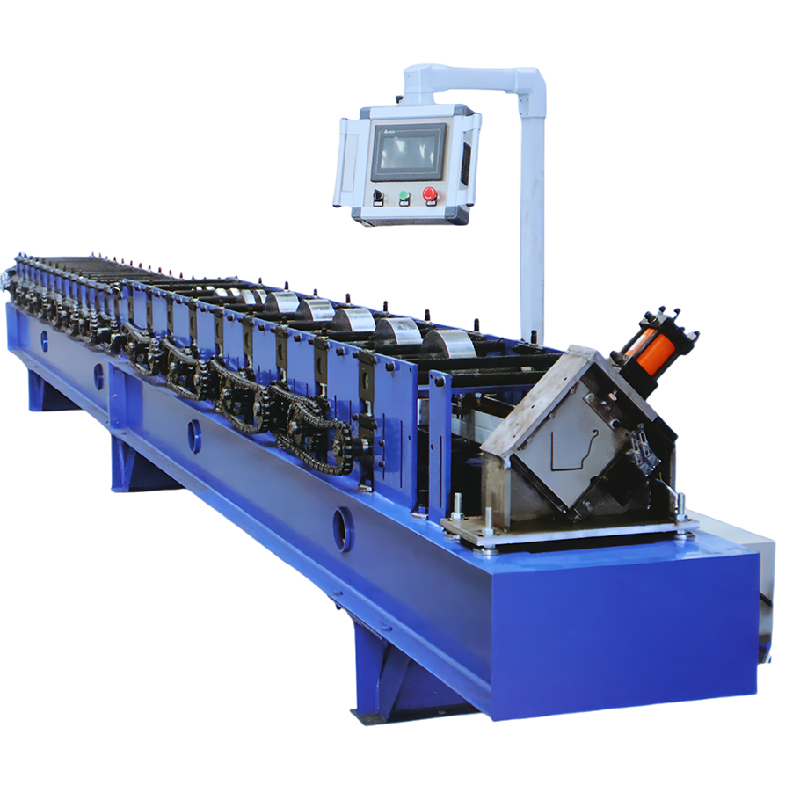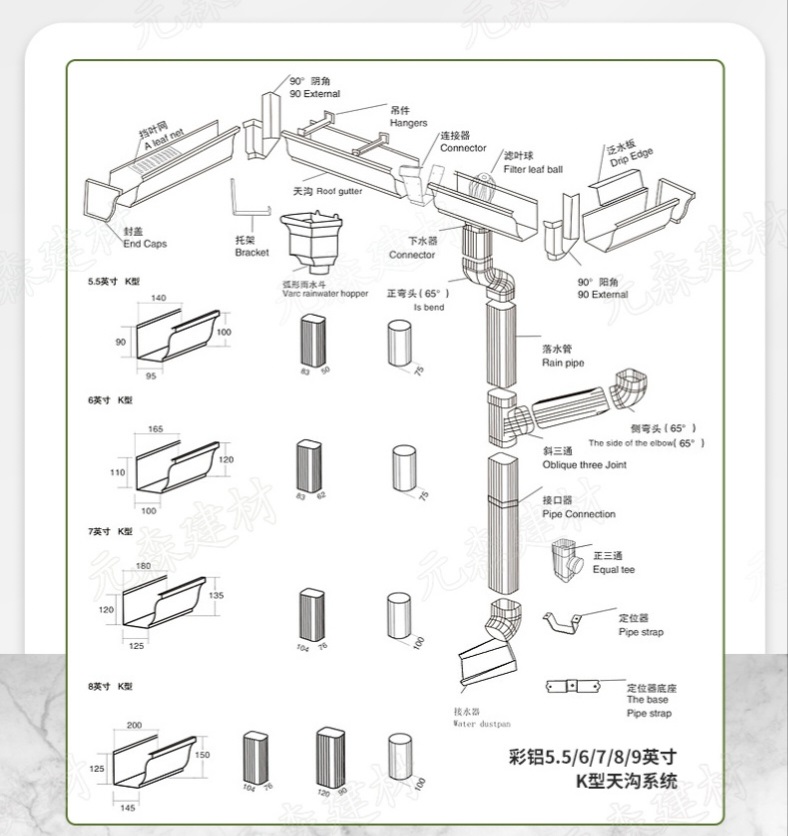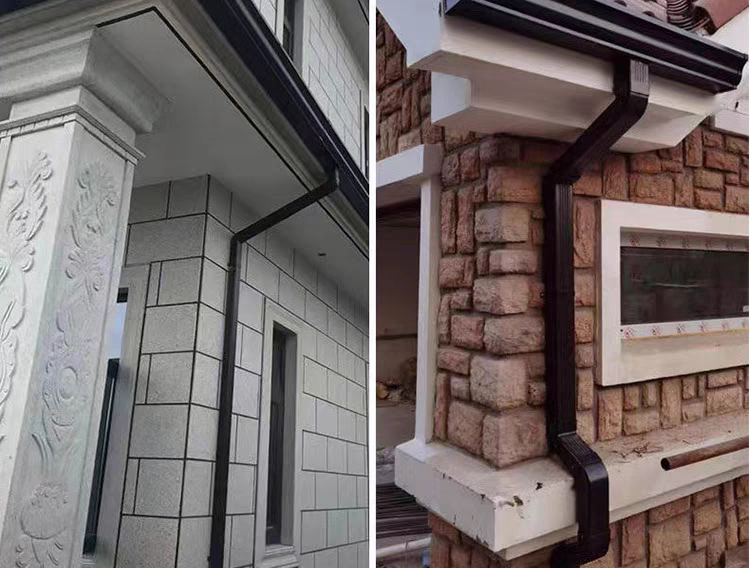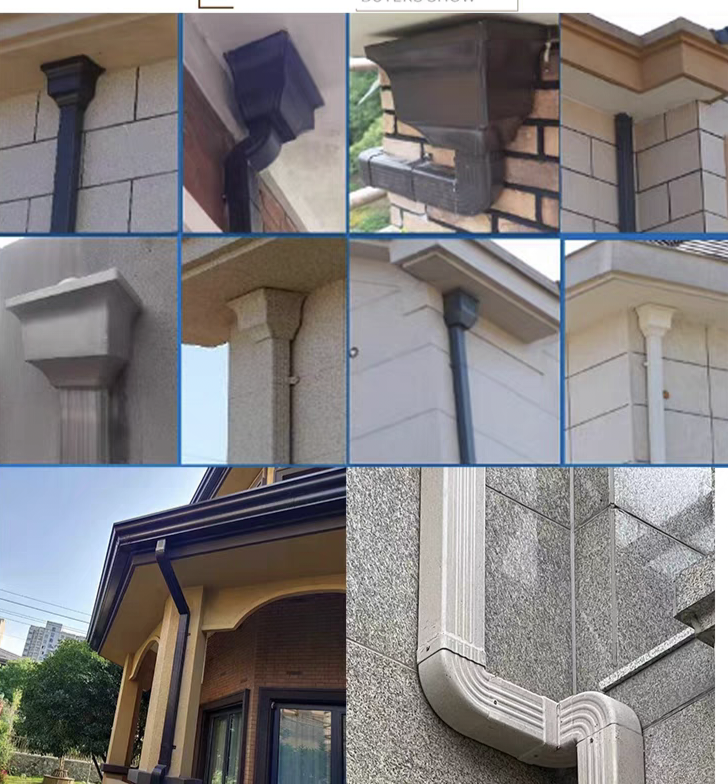1. What’s Gutter Roll Forming Machines?
2. How Gutter Roll Forming Machines Improve Manufacturing Efficiency?
3. The Advantages of Gutter Roll Forming Machine
4. A Step-by-Step Guide to Operating a Gutter Roll Forming Machine
5. Tips for Efficient Operation
What’s Gutter Roll Forming Machines?
Gutter roll forming machines are specialized equipment designed to manufacture gutters, which are essential components in building construction for efficiently managing rainwater drainage from roofs. These machines use the roll forming process to transform coils of metal into continuous lengths of gutter profiles.


How Gutter Roll Forming Machines Improve Manufacturing Efficiency
Gutter roll forming machines significantly improve manufacturing efficiency through several key mechanisms and benefits:
- Continuous Production: These machines allow for continuous production of gutter profiles from coil-fed materials. This continuous process minimizes downtime and increases overall production output compared to traditional methods that involve manual cutting and forming.
- High Speed and Precision: Roll forming machines operate at high speeds, forming gutters with precise dimensions and consistent quality. This speed and precision reduce the time required to manufacture each gutter, thereby enhancing productivity.
- Material Savings: By efficiently utilizing coil-fed materials, gutter roll forming machines minimize material waste. The process optimizes the use of raw materials by precisely forming each gutter profile according to design specifications, reducing scrap and associated costs.
- Automation and Control: Modern gutter roll forming machines are equipped with automated controls that manage the entire production process. Operators can monitor and adjust parameters such as roller positions, cutting lengths, and speeds from a central control panel. This automation improves accuracy and reduces the likelihood of errors during production.
- Versatility: These machines can produce a variety of gutter profiles, including K-style, half-round, and box gutters, among others. They can also accommodate different materials such as aluminum, steel, and copper, depending on project requirements. This versatility allows manufacturers to meet diverse customer needs and expand their product offerings.
- Labor Efficiency: Compared to traditional manual methods of gutter production, which involve multiple steps and labor-intensive processes, roll forming machines require fewer operators to oversee production. This reduces labor costs and allows skilled workers to focus on tasks that require specialized expertise.
- Consistency and Quality: Roll forming ensures consistent quality across all gutter profiles produced. Each gutter is formed with uniform dimensions and structural integrity, meeting industry standards and customer expectations for durability and performance.
- Customization: Gutter roll forming machines can be adjusted to produce custom profiles tailored to specific project requirements. This capability to create bespoke gutter designs enhances flexibility and responsiveness to customer demands, supporting customized solutions in construction and architectural applications.
In conclusion, gutter roll forming machines streamline the manufacturing process by combining speed, precision, automation, and versatility. They optimize material usage, reduce waste, and improve overall production efficiency, making them indispensable tools in the construction industry for manufacturing high-quality gutters efficiently and cost-effectively.

The Advantages of Gutter Roll Forming Machine
●Efficiency: Roll forming machines can produce gutters continuously at high speeds, maximizing production output.
●Precision: The process ensures consistent dimensions and quality in every gutter produced.
●Customization: Machines can be adjusted to produce different gutter profiles and sizes, meeting diverse customer needs.
●Cost-effectiveness: Automated production reduces labor costs and material waste, making gutter roll forming a cost-effective manufacturing solution.
Gutter roll forming machines play a crucial role in the construction industry by providing durable and efficient solutions for rainwater management. Their versatility and efficiency make them indispensable in the production of gutters used in residential, commercial, and industrial buildings worldwide.
A Step-by-Step Guide to Operating a Gutter Roll Forming Machine
1.Prepare the Machine and Materials:
a.Ensure the roll forming machine is properly set up and all safety measures are in place.
b.Load the coil of metal (aluminum, steel, etc.) onto the decoiler of the machine.
2.Adjust the Feeding System:
a.Set the coil decoiler to feed the metal strip into the roll forming machine at the appropriate speed and tension.
b.Align the metal strip properly to ensure smooth feeding into the rollers.
3.Set Up the Roll Forming Stations:
a.Adjust the roll forming stations according to the specific gutter profile being produced (e.g., K-style, half-round).
b.Position the rollers and dies to match the dimensions and shape required for the gutter profile.
4.Start the Machine and Monitor Operation:
a.Activate the roll forming machine to begin the production process.
b.Monitor the initial forming of the gutter profile to ensure proper alignment and dimensions.
c.Adjust roller settings or machine speed if necessary to achieve the desired profile quality.
5.Cutting and Length Control:
a.Integrate the cutting mechanism into the production line to cut the gutter profiles to the required lengths.
b.Use automated cutting systems if available to ensure precise and consistent lengths without interrupting production.
6.Quality Control and Adjustments:
a.Regularly inspect the formed gutter profiles for quality, checking dimensions, surface finish, and structural integrity.
b.Make adjustments to the machine settings as needed to maintain consistent quality throughout the production run.
7.Handle Finished Gutter Profiles:
a.Stack or bundle the finished gutter profiles according to customer requirements or storage needs.
b.Use automated stacking systems if available to streamline this process and reduce manual handling.
8.Shutdown and Maintenance:
a.Shut down the roll forming machine properly after completing the production run.
b.Perform routine maintenance tasks such as cleaning, lubricating, and inspecting machine components to ensure optimal performance and longevity.
9.Safety Procedures:
a.Throughout the operation, prioritize safety procedures to protect operators and maintain a safe working environment.
b.Ensure all safety guards are in place and operators are trained in safe machine operation practices.
Tips for Efficient Operation:
- Training: Ensure operators are properly trained in operating the specific gutter roll forming machine model.
- Monitoring: Regularly monitor production parameters and quality to catch any issues early and minimize downtime.
- Maintenance: Follow manufacturer-recommended maintenance schedules to prevent breakdowns and ensure consistent performance.
- Flexibility: Be prepared to adjust machine settings and processes to accommodate different gutter profiles and material specifications.
By following this step-by-step guide and adhering to best practices, operators can effectively operate a gutter roll forming machine to produce high-quality gutter profiles efficiently and meet customer demands in the construction and roofing industries.

